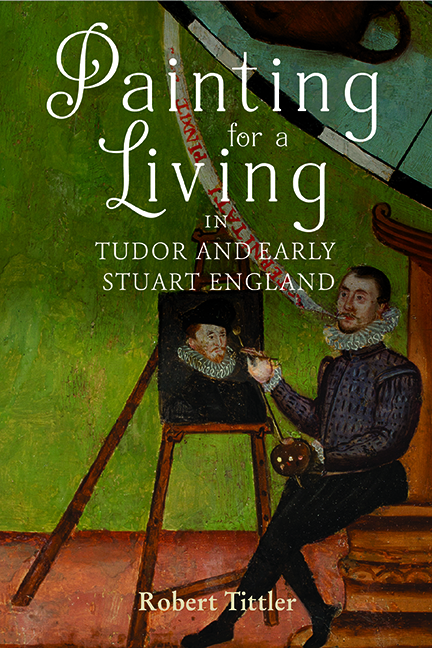Book contents
- Frontmatter
- Dedication
- Contents
- List of Illustrations
- Preface
- Acknowledgements
- Editorial Conventions and Abbreviations
- Part I Introduction
- Part II Kinds of People
- Part III Particular Specialities
- Part IV Ways and Means
- Part V Conclusion
- Bibliography
- Index
- STUDIES IN EARLY MODERN CULTURAL, POLITICAL AND SOCIAL HISTORY
10 - An Occupation in Transition
Published online by Cambridge University Press: 26 May 2022
- Frontmatter
- Dedication
- Contents
- List of Illustrations
- Preface
- Acknowledgements
- Editorial Conventions and Abbreviations
- Part I Introduction
- Part II Kinds of People
- Part III Particular Specialities
- Part IV Ways and Means
- Part V Conclusion
- Bibliography
- Index
- STUDIES IN EARLY MODERN CULTURAL, POLITICAL AND SOCIAL HISTORY
Summary
The years between the accession of the Tudors and the outbreak of the Civil Wars form a famously protean age in all sorts of ways. For those in the painters’ trade, no doubt as well as in many others, the era shifted the very firmament on which the occupation had long stood. Along with other developments, art historical scholarship has long probed the impact of continental influences on English visual culture, and the consequences of those influences on the subject matter, techniques, and style of painting in these years. But in a larger sense, the tenor of the times themselves, including the emerging court cultures of both Tudors and early Stuarts, the English Reformation, the shifts and swings of English foreign policy, and the dramatic population growth and the concomitant competition for social status, also all effected developments in the painters’ world which were both substantial and enduring. In the story of those who painted for a living, this was truly a new and distinct era.
Through these years English painters encountered a host of innovations, whether of medium, technique, or subject matter which challenged their traditional activities and prompted a choice between adaptation or stagnation. The extent to which the individual craftsman could ride these waves determined his, and occasionally her, success. The extent to which the occupation as a whole made such adjustments determined its future, and the course of English visual culture itself.
In consequence, painters in the age of Charles I had quite a different occupational profile from their forebears in the time of Henry VII. Over the span of but a few decades of the mid-sixteenth century the visual subject matter of traditional Roman Catholic worship gave way to the very different visual culture of a nascent Anglican tradition. With it came a new approach to religious subject matter and a surging demand for secular painting both figurative and decorative. After the 1530s the English admiration for continental courtly culture expressed itself in distinct preferences for transalpine and protestant models rather than cisalpine and Roman Catholic. Stranger-painters continued to come to England, though now more from the northern realms than the southern, and they continued to engage in a long and often fraught dialogue with their native English counterparts.
- Type
- Chapter
- Information
- Painting for a Living in Tudor and Early Stuart England , pp. 233 - 242Publisher: Boydell & BrewerPrint publication year: 2022



